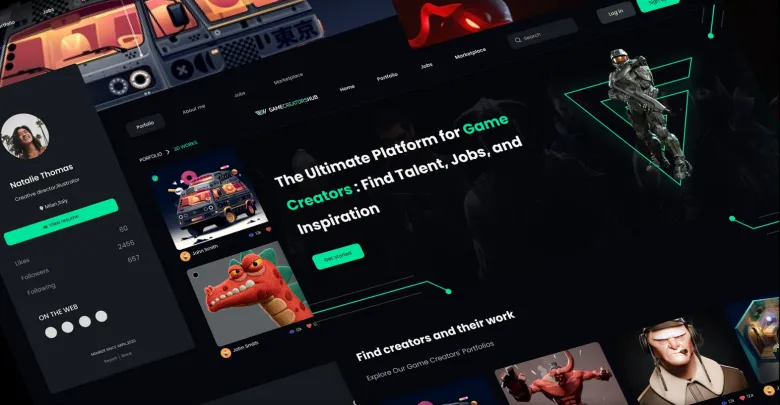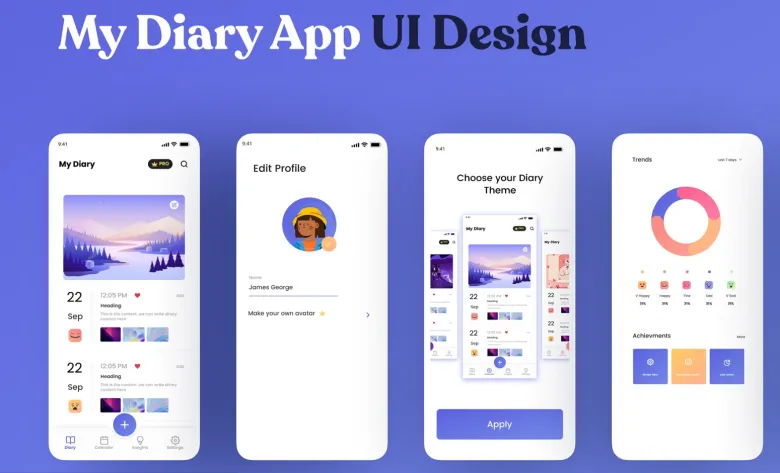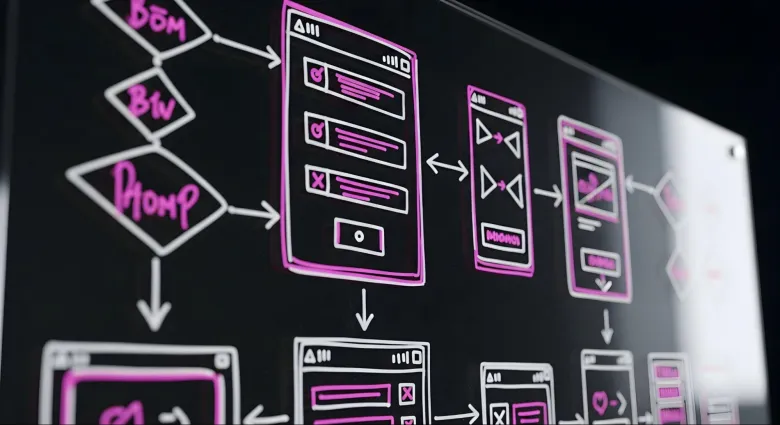Are you an engineer thinking about design? Your B.Tech skills can be a stepping stone to becoming a UI UX designer. Read for a detailed guide to this career switch.
Can an engineer become a designer? If you’re an engineering graduate who has this question on their mind, you’re not alone. You spent years learning technical skills, but now you might feel like there’s more to your career than coding.
Well, there’s good news! UI UX design is a great path for engineers looking to change their career trajectory. It lets you use your analytical skills and also be creative. Plus, the tech world would likely be happy to include designers who understand how products truly work.
This guide will show you exactly how to make such a career switch. We’ll explain what UI UX design is, why your engineering background helps, and how to pick the right course. Most importantly, we’ll share real success stories and steps you can take today.
Here is a list of topics we have covered!
- What Is UI UX Design and Why Does It Matter?
- Why B.Tech Graduates Make Great UI UX Designers?
- How to Choose the Right UI UX Course After B.Tech
- Aromal’s Journey With AND: From B.Tech to UI UX
- What You’ll Learn in AND Academy’s UI UX Courses
- Your First UI UX Project Roadmap
- FAQ
- Conclusion
What Is UI UX Design and Why Does It Matter?
UI UX design is all about making digital products that people want to use. UI (User Interface) is about how things look. UX (User Experience) focuses on how things work and feel.
Think about your favorite app. It probably loads fast, looks neat, and makes sense without instructions. That’s not an accident! Someone designed every button, screen, and interaction to deliver that experience to you.
Companies today care about user experience. Why? Because good design directly helps their business. Users leave apps/websites that confuse them and buy from the ones that make shopping easy.

Quick Question: “Is UI UX just about making things look pretty?”
Nope! While how things look is important, UI UX is mostly about solving problems. Within the niche, you study what users need. You try out different solutions. You check what works and what doesn’t. It’s both scientific and creative.
This field is growing fast. In the last five years, job openings for UI UX have grown 67% YoY. New designers can expect to earn ₹4-8 lakhs per year. Experienced designers can easily make ₹15+ lakhs.
If the field sounds interesting, consider AND Academy’s 18-week Certificate course, equipped to give you a strong start in UI UX. It teaches you all the basics and comes with placement support.
Why B.Tech Graduates Make Great UI UX Designers
Your engineering skills are a huge plus for design. Here’s why:
- You’re a Problem Solver: Engineers break down big problems. UX designers do the same. You already know how to look into things, check facts, and test ideas.
- You Understand How Things Work: You know how software is built. This helps you ideate designs that can be made. You’ll work better with developers because you understand their world.
- You Think Methodically: Engineering taught you to follow steps. UI UX design also has clear steps: research, brainstorm, build a test model, test it, and make changes. Your organized way of thinking will help you at every stage.
- You Love Data: Engineers use facts and numbers. Great UX designers do, too. You’ll naturally use A/B tests, look at user info, and try to improve things. This makes you more valuable than peers who just guess.
Quick Question: “Do I need to know coding as a UI UX designer?”
No, but it’s helpful. Knowing the basics of HTML and CSS helps you communicate better with developers. You’ll design things that are easier to build and spot problems early. Don’t worry, as a UI UX Designer, you won’t be coding all day.
Your existing tech knowledge gives you an advantage over design students from other fields. You already understand things like APIs and system limits. This makes your designs more realistic and easier to use.
AND Academy’s Diploma course understands and supports such career transformations. It teaches design thinking while building on your tech background, ensuring you upskill in the right direction.
How to Choose the Right UI UX Course After B.Tech
Not all UI UX courses are good. Here’s what to ask before you join one:
- Does the course teach design basics, or just how to use software?
- Are projects based on real problems or just simple exercises?
- How many mentors are there per student?
- Do they help with careers and review your portfolio?
- Can people who work full-time attend classes?
What to Check for When Choosing a Course:
- Look for lessons on research and understanding people.
- Make sure there are hands-on projects with feedback.
- The teachers should be industry experts.
- Classes should be flexible for working students.
- They should help you build your portfolio.
- They should offer job help or internships.
- The course material should be up-to-date with new design trends.
Many courses teach a lot about software like Figma, Sketch, and Adobe XD. While these tools are important, they’re only 20% of what makes a good designer. The other 80% is about understanding users, business goals, and design rules.
Look for courses that start with design thinking and user research. They should teach you how to check if your ideas are good before you start designing. This is how real companies work, and in any job, you would need these skills.
AND courses cater to this need and are practical and project-focused. Students work on real problems from day one. Read on to know how we transformed a BTech graduate’s career trajectory with this teaching style.
Aromal’s Journey With AND: From B.Tech to UI UX

Aromal went from a B.Tech graduate to a UI UX designer with AND Academy’s UI UX Design Diploma. His story shows how engineers can learn design skills with the right upskilling course.
Let’s look into Aromal’s story to know how this transition actually works.
What was Aromal’s background before UI UX?
Aromal earned a B.Tech degree from Kochi. During his studies, he did freelance work in motion graphics and graphic design. In short, he had ample technical skills but little design experience.
What made him interested in UI UX?
A client asked him to design a website. He realized his graphics knowledge was not enough to create user-friendly digital experiences. This project sparked his interest in the field of UI UX Design.
Why did he choose AND Academy?
After researching design schools across India, he came across and was impressed by the AND Academy’s website. The clear design and expansive information on the curriculum convinced him. He appreciated the course’s focus on design processes, rather than just software training.
Aromal’s Journey in a Glimpse:
- Started as a B.Tech student with freelance work experience in graphics
- The first website design project showed him his knowledge gaps
- Looked for formal UI UX education
- Joined AND Academy’s Diploma in UX UI Design
- Finished three big projects during the course and gained hands-on experience
- Now offers UI UX services to clients along with his old work
Why Aromal Chose AND Academy’s Diploma in UI UX Design
Aromal moved from engineering to design, combining logic with creativity. His story shows that a technical background is a big advantage in the design space.
“What convinced me was the website’s complete and clear design. I found all the information I needed on the homepage, including the curriculum, which was exactly what I was looking for. I loved how the curriculum also focused on design and the processes behind it, besides software training.” – Aromal
Aromal’s story shows you do not need to leave your technical background. Instead, you can build on it. His engineering way of thinking helped him approach design projects step by step. This mix made him stand out from pure design graduates.

Today, Aromal creates complex apps like Kiddy Kinder (a babysitter booking app) and Game Creators Hub (a gaming community platform). His projects show detailed user research, data analysis, and smart thinking. These are all skills he gained from his engineering education.
You can read all about Aromal’s journey here: From B.Tech Graduate to UI UX Designer
What You’ll Learn in AND Academy’s UI UX Courses
AND Academy has the following courses to help you reach your career goals.
- Certificate Course: This is great if you want to try the field out and learn the basics.
- Diploma Course: This offers thorough training with big projects, like the one Aromal finished.
- PG Diploma: This covers advanced topics for people changing careers who want leadership roles.
What You Will Learn:
- How to do user research and conduct interviews.
- How to analyze data using affinity mapping and user personas.
- How to design information architecture and user flows.
- How to use wireframing and prototyping tools.
- Visual design basics and design systems.
- How to test usability and improve designs.
- How to create a portfolio and present your work.

Your First UI UX Project Roadmap
Here is how to approach your first major UI UX project using design methods:
Phase 1
Research Questions and Methods: Start by understanding the problem deeply. Do not jump into solutions immediately.
- Define your target users clearly.
- Create survey questions to understand user pain points.
- Conduct 8 to 10 user interviews for qualitative insights.
- Analyze competing products in the market.
- Document everything you learn.
Research is the foundation of good design. Without it, you are just guessing what users need. Aim for both quantitative data (surveys) and qualitative insights (interviews) to get the complete picture.
Phase 2
Analysis and Insights: Raw research data is useless without proper analysis.
- Use affinity mapping to group similar feedback.
- Create empathy maps to understand user emotions.
- Develop 2 to 3 detailed user personas.
- Identify the top 3 user pain points.
- Define success metrics for your solution.
This phase turns scattered feedback into clear patterns. Most design failures happen because teams skip this step and miss the real user needs hiding in the data.
Phase 3
Wireframes to Final Design: Now you can start designing solutions based on real insights.
- Sketch low-fidelity wireframes on paper first.
- Test wireframes with 5 to 6 potential users.
- Create high-fidelity mockups in Figma or similar tools.
- Design a complete user flow from start to finish.
- Document your design decisions and reasoning.
Start simple and add complexity gradually. Paper sketches help you think through ideas quickly without getting distracted by colors and fancy effects. Test early and often to catch problems before they become expensive to fix.
These phases mirror AND Academy’s capstone project approach. Students get mentorship at each step and present their work to industry professionals for feedback.
FAQ
1. How do I build a UI UX portfolio after my engineering degree if I have no experience?
This is the biggest hurdle for new people, but it’s something you can overcome.
- Join a project-based course. This is the fastest way. Programs like those at AND Academy have projects designed to be the main part of your portfolio.
- Redesign an existing app. Pick an app you use and find its problems. Design a better version and explain why you made those choices. This shows how you think about design.
- Offer to help a local business or non-profit. Many small groups need a better website. This gives you a real client and a real project.
- Create a concept project. Think of a problem you have and design an app to fix it.
2. Can I learn UI UX without a design background?
Absolutely. UI UX is more about following a process and understanding people than artistic talent. Your analytical skills from engineering are a great starting point. A structured course will teach you the design rules, tools, and steps you need to do well.
3. What tools should I learn first?
Do not try to learn everything at once. Focus on these two UI UX Design tools first:
- Figma: This is the most popular tool for designing interfaces and making prototypes. It is easy to use and lets you work with others.
- A notebook and pen: The best ideas begin with simple drawings. Do not underestimate how powerful pen and paper are for brainstorming and sketching out ideas.
4. Is a certificate enough to get a job?
An 18-week certificate is a great start. It gives you strong basics and a project for your portfolio. For some entry-level roles, this can be enough. A Diploma or PG Diploma will make you a much stronger candidate for more types of jobs.
5. Will I get placement help?
Good institutions offer career support. AND Academy provides help with job placement, assisting you in preparing your resume and portfolio, and arming you with interview skills to get a great job after finishing your course.
6. Can I work full-time while learning?
Yes. Many courses, including those at AND Academy, are made for working professionals. With evening classes and flexible project times, you can handle both your job and your studies.
7. What kind of salary can I expect?
UI UX design is a field that pays well. As a new person in the field, your salary will depend on your skills, portfolio, and the city you work in. With a strong portfolio from a good school, you can expect a good starting salary that grows quickly as you get more experience.
Conclusion
Changing careers from engineering to UI UX design will open up several opportunities. As an engineer, you already have a logical mindset. By adding creativity, you can build a strong career. You’ll solve interesting problems that help people daily.
Don’t waste time on courses that just teach you how to use software. Instead, find programs that teach you how to think like a designer, understand what users need, and solve real problems.
Next Steps
We recommend that you check out this project by AND Learner, Yash Ramdas, to further understand applications of these principles and also get inspiration for your next project!
In case you think you need further assistance, here are some of our resources you can consider:
- Watch this session by Shiva Viswanathan, Design Head of Ogilvy Pennywise, and Naman Singh, Product Experience Designer at RED.
- Talk to a course advisor to discuss how you can transform your career with one of our courses.
- Pursue our UI UX Design courses – all courses are taught through live, interactive classes by industry experts, and some even offer a Job Guarantee.
- Take advantage of our scholarship and funding options to overcome any financial hurdle on the path to your career transformation.
Note: All information and/or data from external sources is believed to be accurate as of the date of publication.









